Death will be like the end of the summer holidays
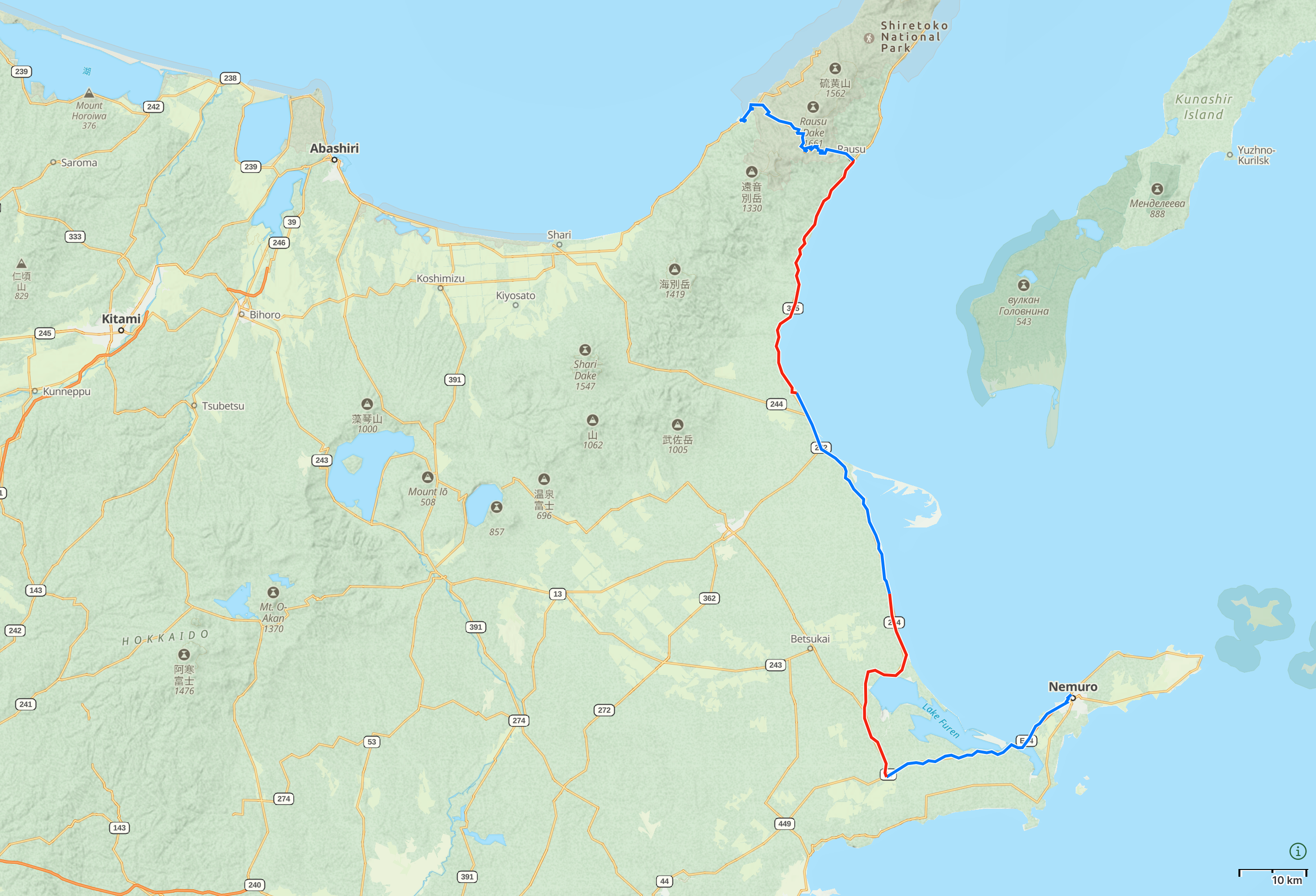
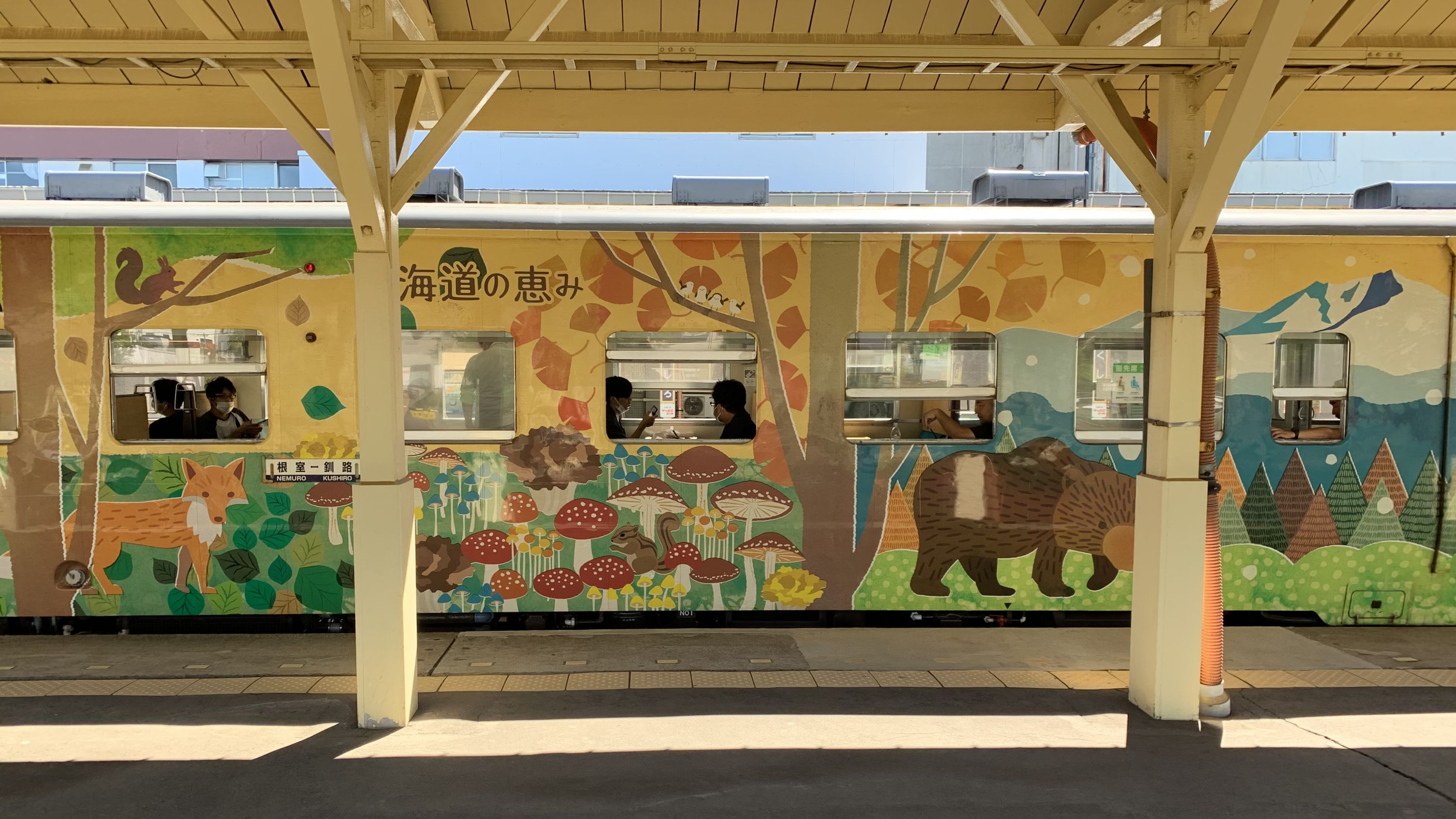
The train to the end of Japan is painted a child’s dream of a northern forest, a land of bears, volcanoes, mushrooms, foxes, woodpeckers, and it leaves Kushiro in the glorious afternoon sun. It plunges into dense woods and rolls east, towards Nemuro, where Japan fades into the Kuril Islands of Russia. It takes five days to walk there from Kushiro. I know this because I walked there five years ago, starting not in Kushiro but in Kagoshima, the other end of Japan, four months away on foot. I reached Nemuro on August 21, 2017, and now it was August 21, 2022, and I was going back to the same place, on the same day, to pick up the trail of my footsteps the next morning.
I dreamed of going back to this small town, dreams which swirled and turned and faded then glowed bright again. They made no sense. I had already walked from one end of Japan to the other. I later wrote a book about another walk in Japan, off to the south-west, across the island of Shikoku. The Western eye has processed the perceived exoticism of this country to death, and as for the poetry of its ordinariness one can just read the works of Alan Booth. There are other worlds than these, this string of islands in the Pacific, but I dreamed regardless, and now the train makes its final run, and the fog swirls over the ocean, grey and dull. It then turns a brilliant, luminous white when it flows across the tracks and envelops us in its glow. It is made by the collision of two ocean currents off the coast, the cold Oyashio with the warm Kuroshio. A white-tailed eagle sits by the tracks with its back turned, wearing its great cloak of feathers in every shade of brown and grey.
Impossibly and wonderfully, my brother Gabor is with me again. He joined me for the last quarter of my journey across Japan in 2017, across Hokkaido from Hakodate to Nemuro, and he happens to be in Japan on a work trip and decides to see me off and walk with me for the first few days. He used to live in Japan, in the south, in Kagoshima, where volcanic ash falls like black snow. And after all these years, these five strange and floating years of plague and war, I catch up with my dreams at last, on the absurdly oversized streets at the end of Japan, and we stand there and laugh.
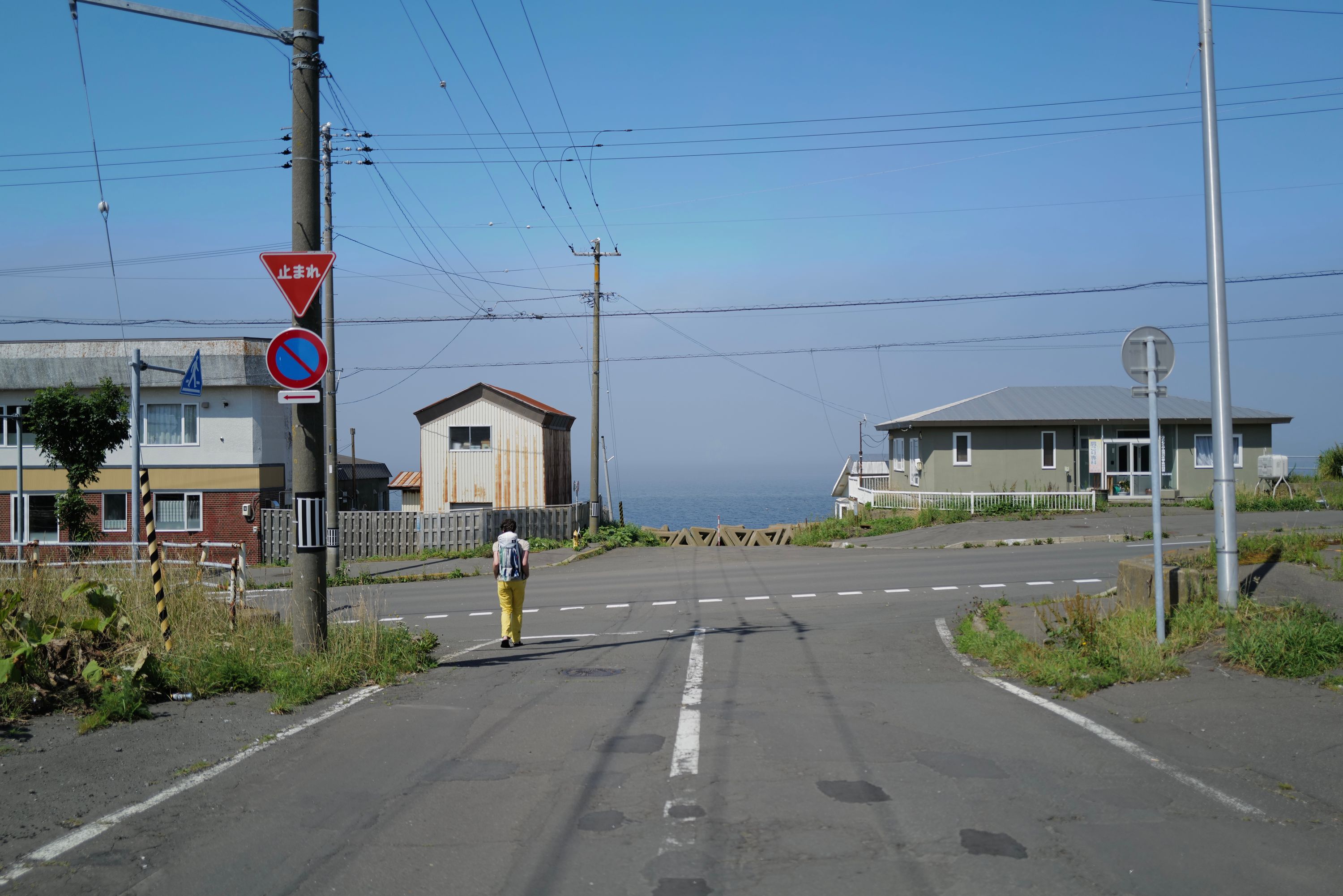
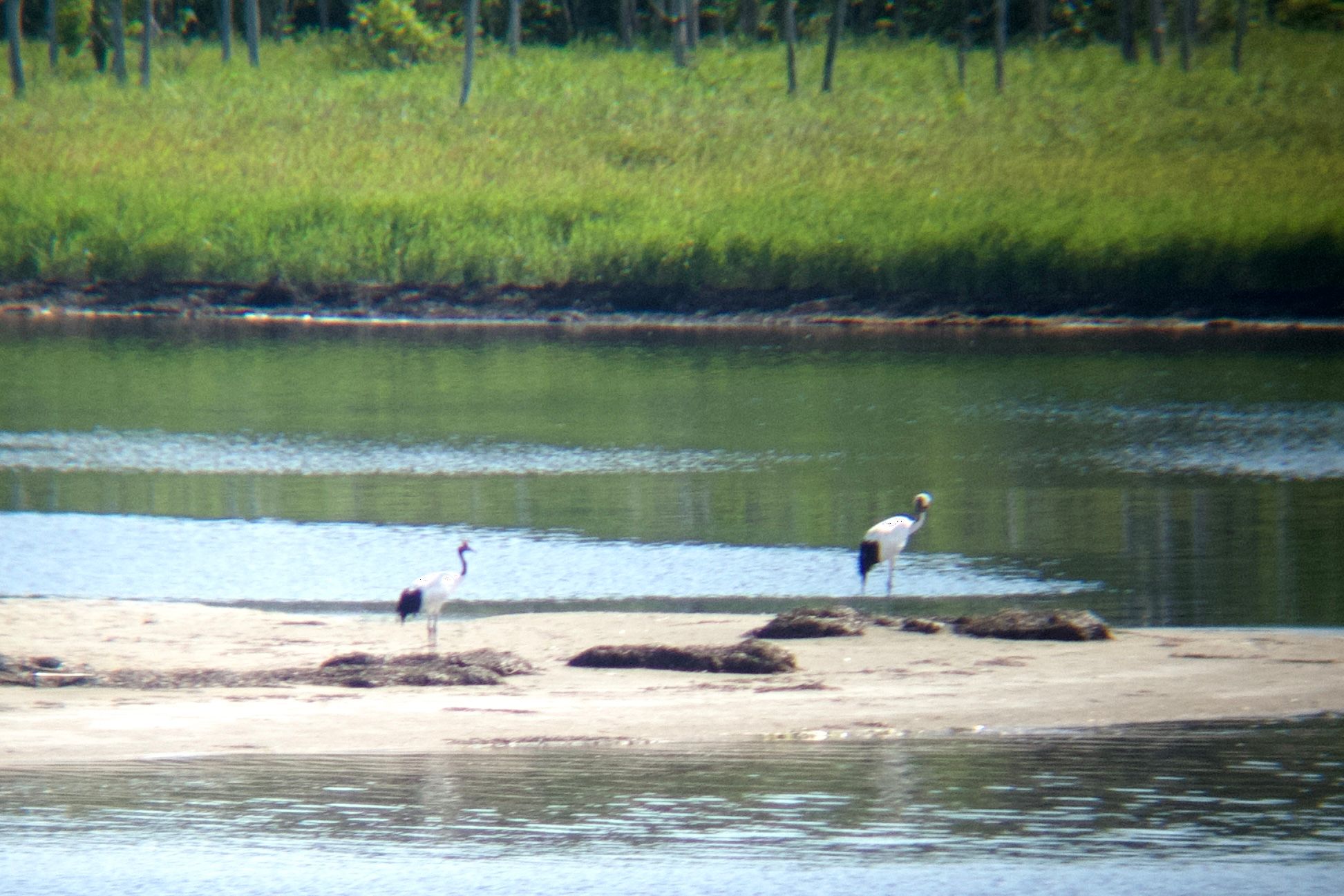
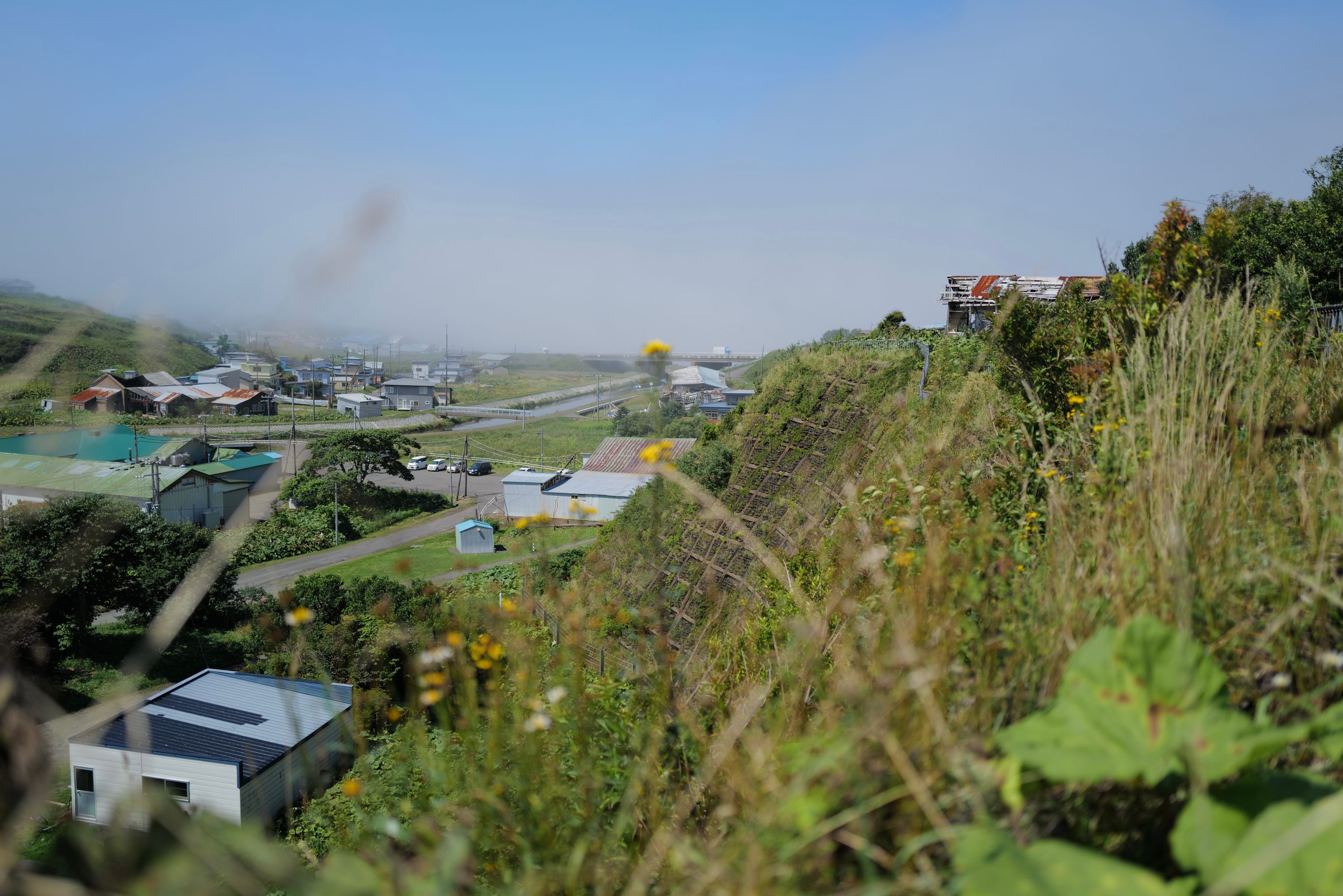
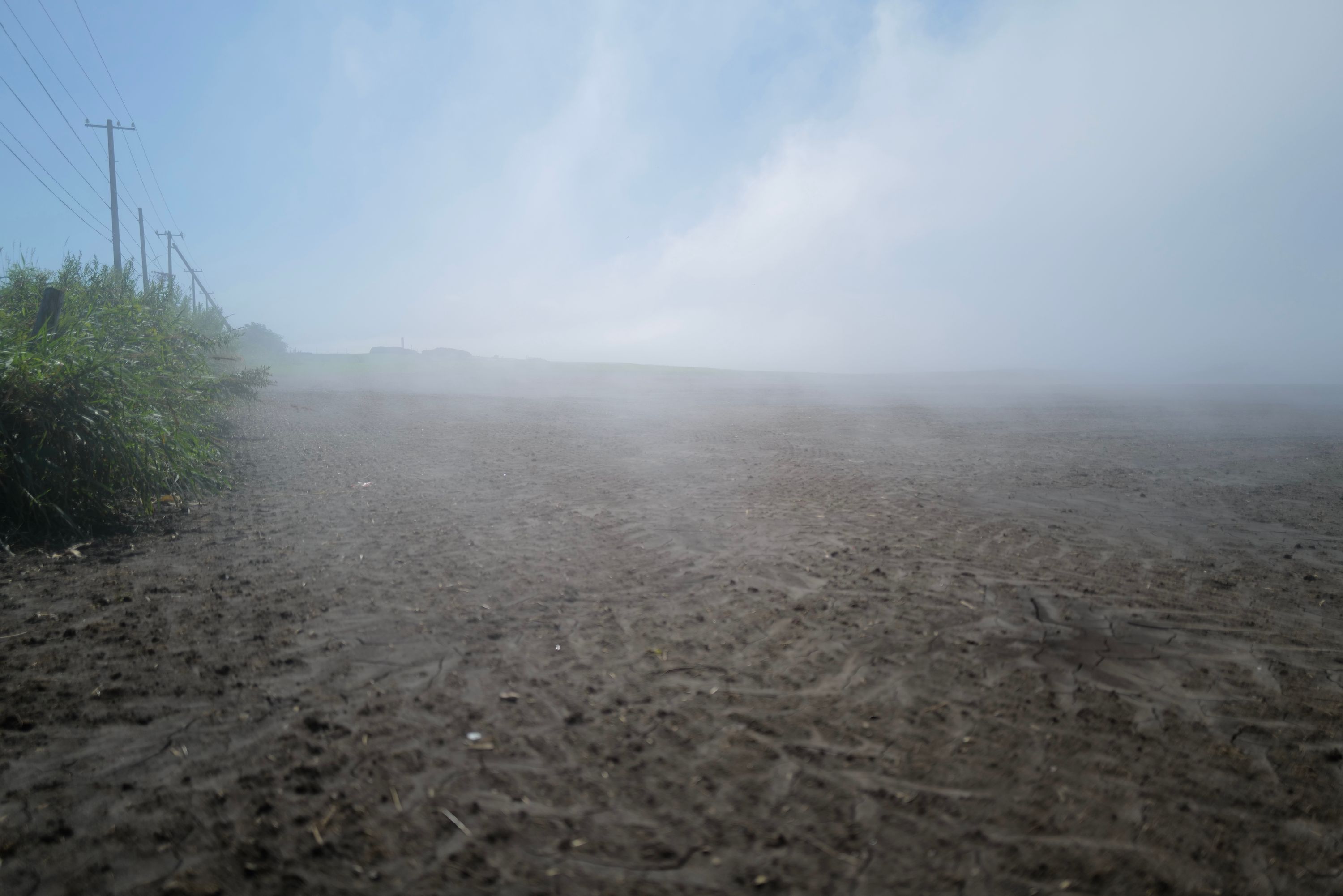
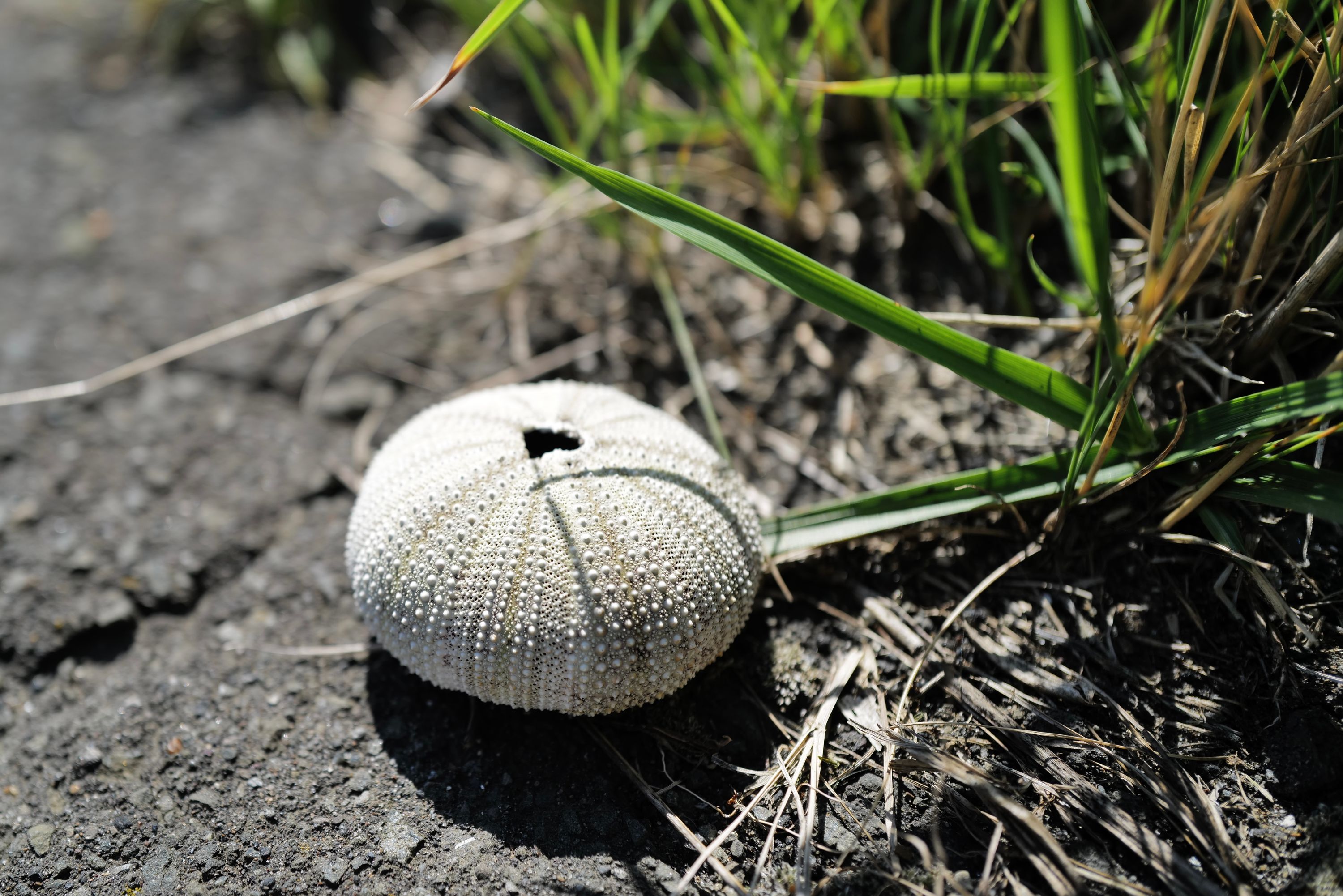
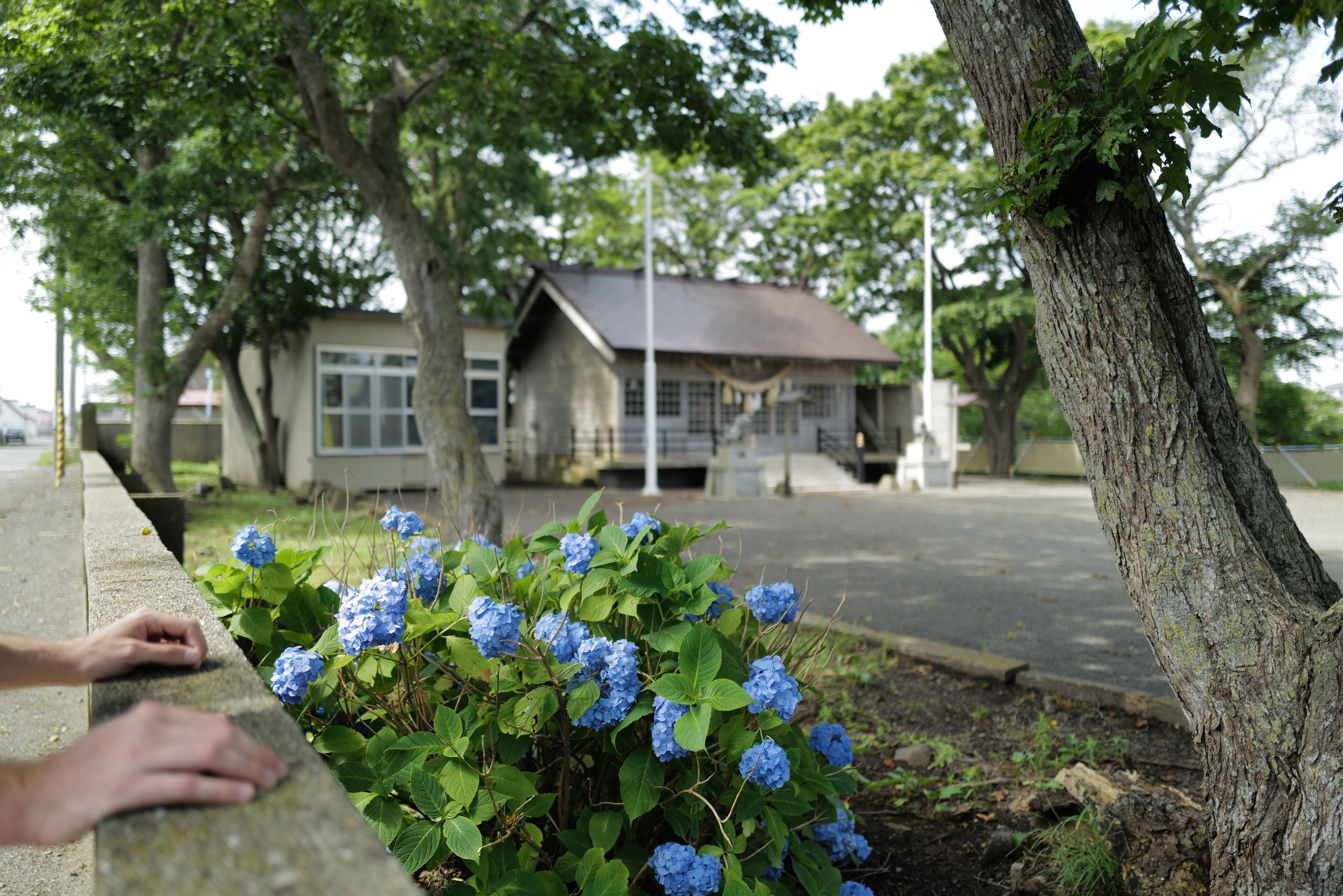
We shoulder our rucksacks at the guesthouse, the first foreign guests in the corona era, and walk to the shrine where we spent our last night five years ago. The luminous wall of fog surrounds the town and obscures the sea, the sky a faded northern blue.
The borders of Russia and Japan have ebbed and flowed on these shores for the past century and a half, and have been just offshore since Japan’s defeat in World War II. We pass a shack welded together from pieces of a metal billboard which asks for, or rather demands, the return of Kunashir, Iturup, Shikotan, and the Habomais, the southern four of the Kurils which Japan still considers its own. Though Nemuro itself has always been a part of Japan, it reminds me of the towns and cities I’ve seen across the former Soviet Union. A fishing town with enormous grey concrete buildings, where small cars drive down wide avenues sized for armored columns and are further dwarfed by these expanses of asphalt. The road signs are all in Japanese, Russian, and English, and most shops carry Russian signage.
We walk past the shrine and link up with the invisible line of our five-year-old footsteps. My body is a stranger’s house, loaded with an overfilled rucksack and years of neglect. We eat strawberry-flavored rice cakes with titanium chopsticks, sitting on a curb in a parking lot. White-tailed eagles spiral into the sky. The fog rolls across freshly tilled fields like a silver blanket.
Five years ago, when we turned on the last road to Nemuro, we saw a pair of red-crowned cranes foraging on a sandbank in the wide channel which connects Lake Onneto with the sea, an hour or two from the town. Five years later the cranes are there on the exact spot, perhaps the same pair, perhaps another, perhaps their offspring. People sometimes ask me why I walk and I find it difficult to explain but then I think of these moments, these lily-pads of synchronicities over which I step, weightless.
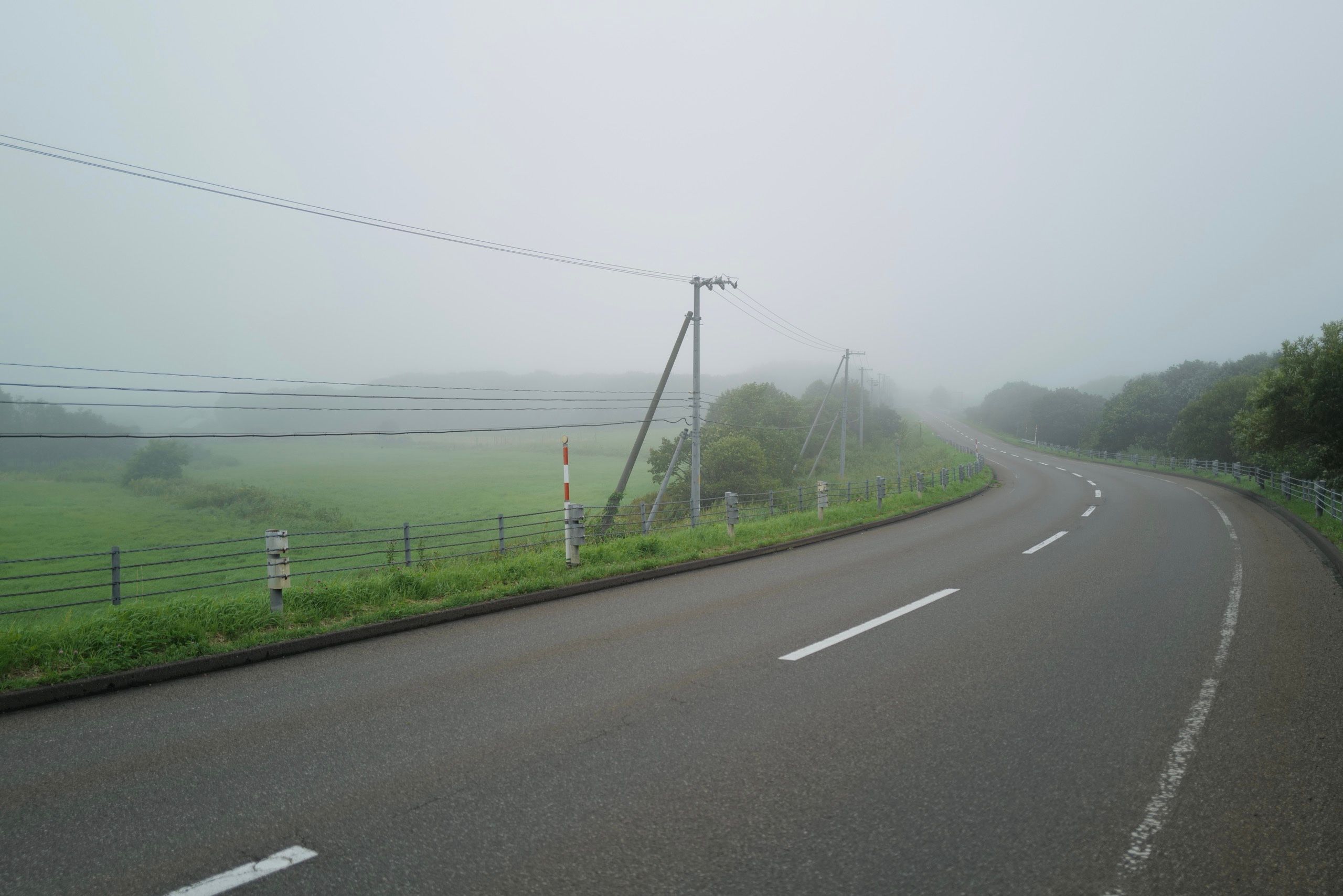
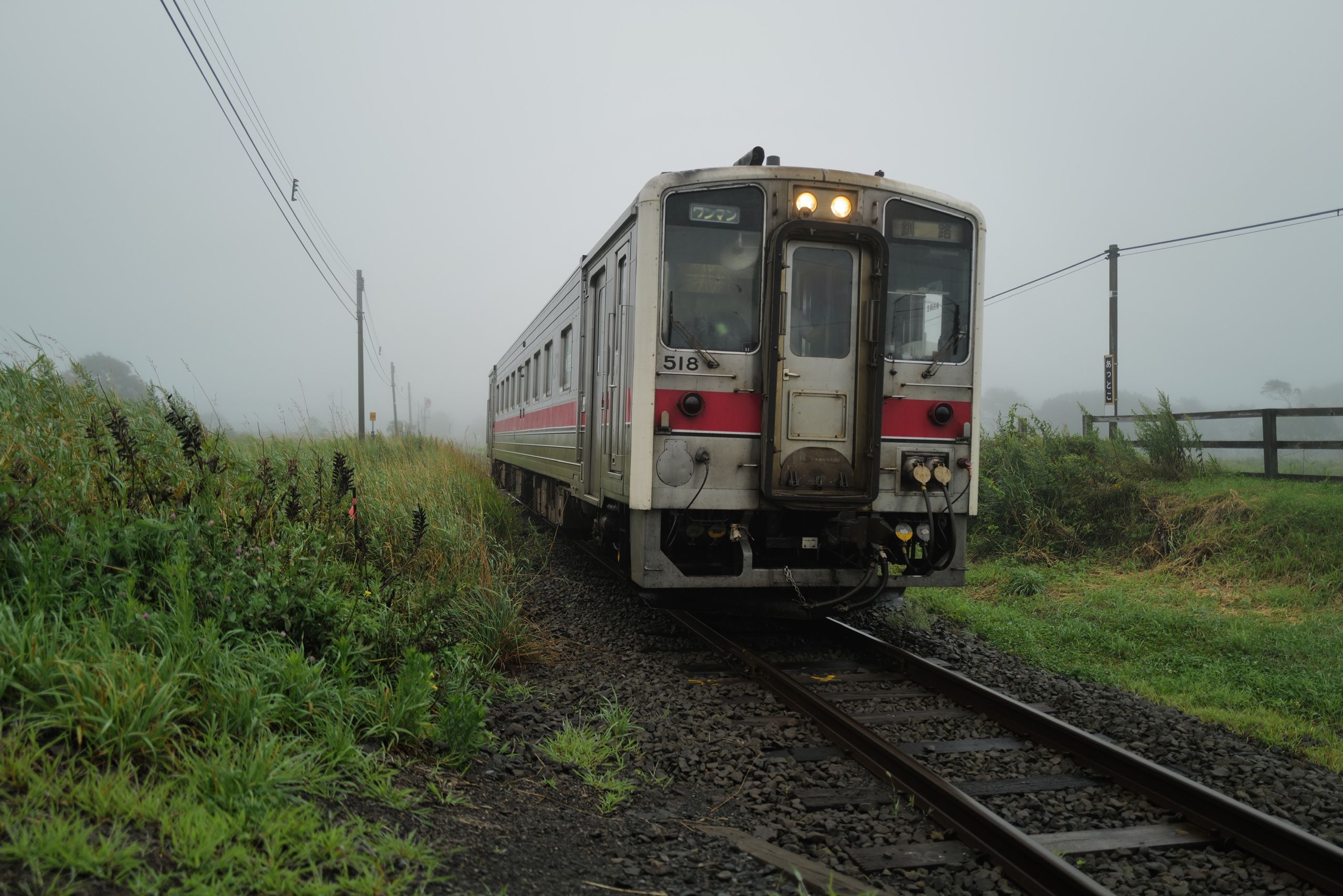
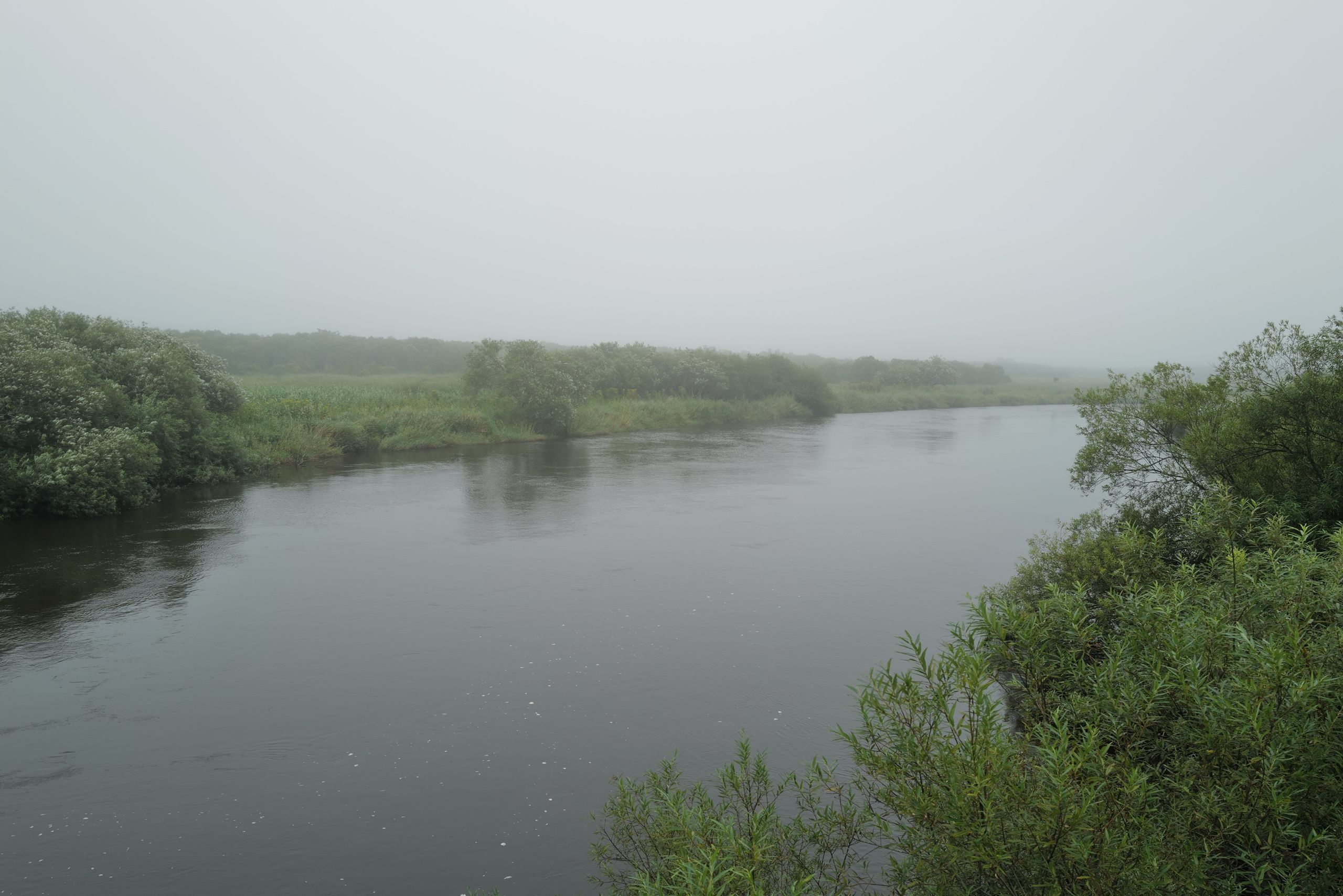
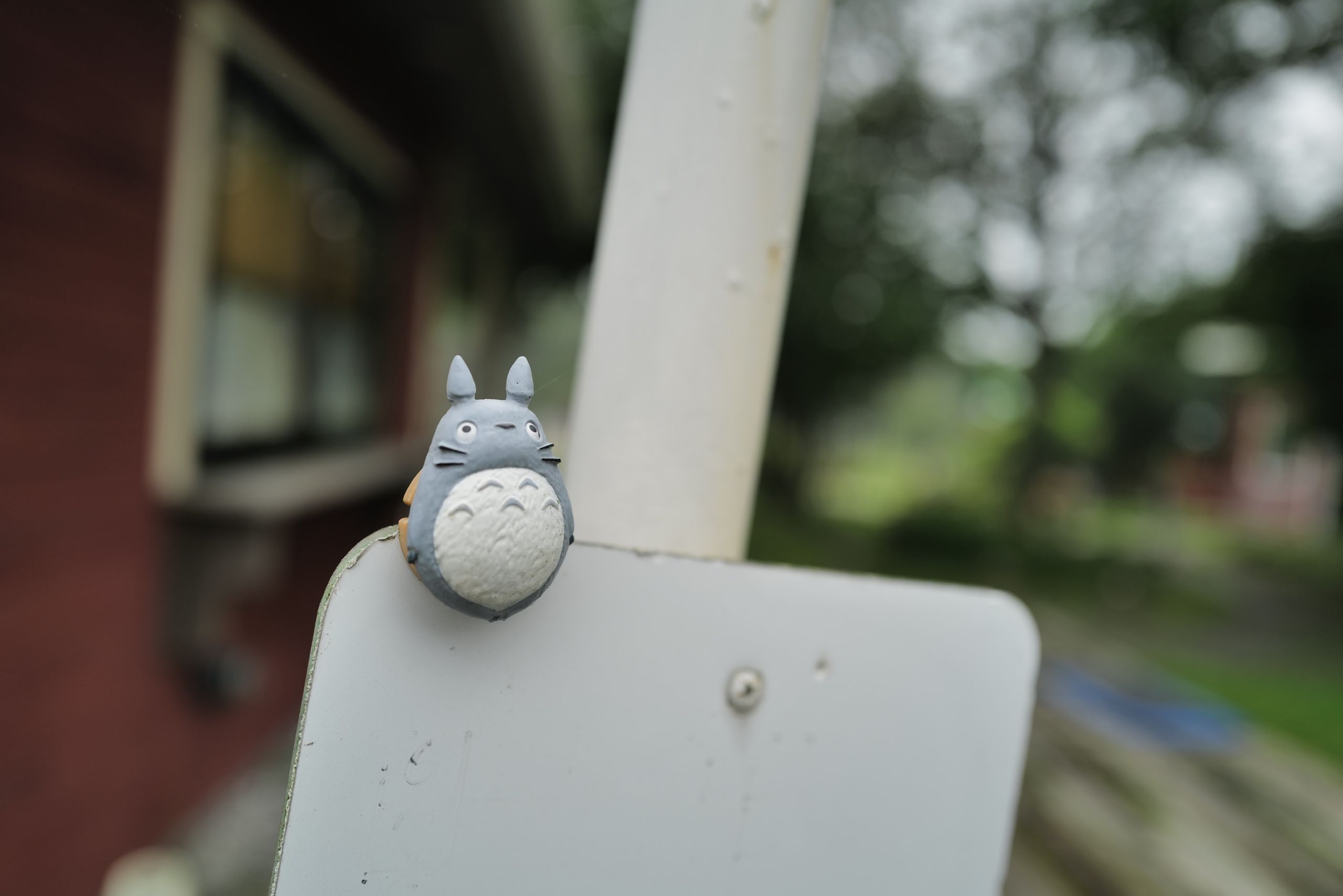
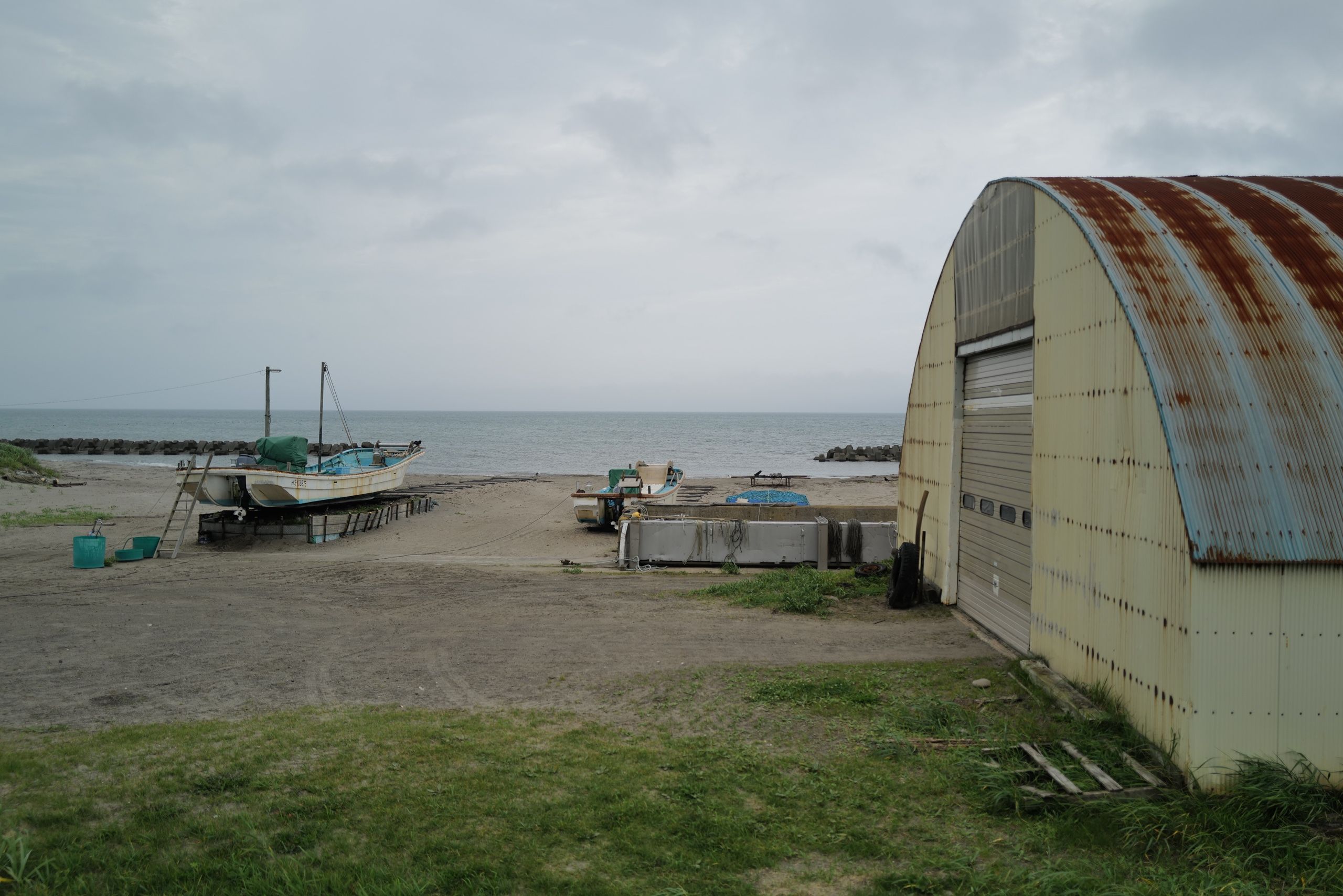
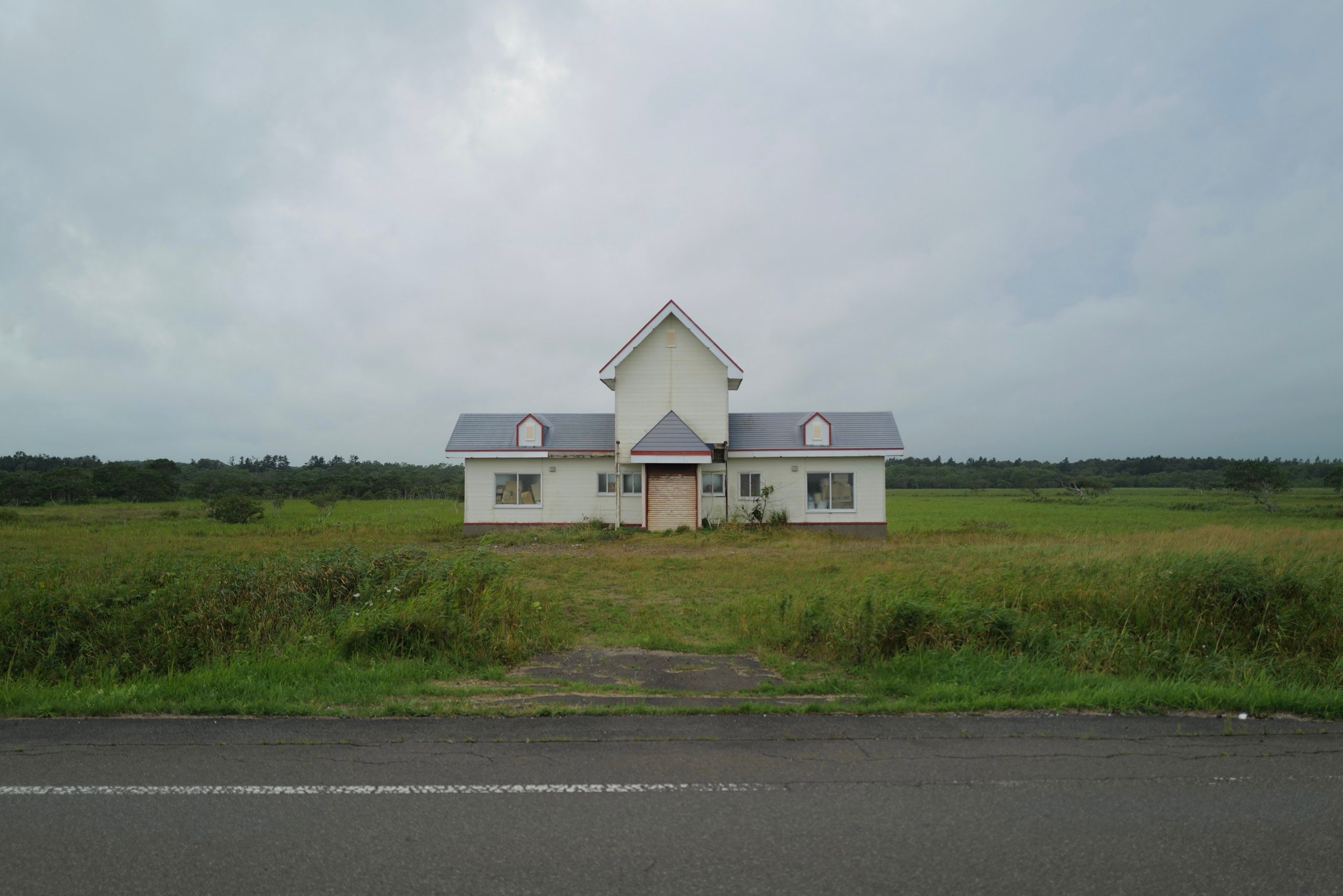
I tend not to write about the physical hardship of walking for the simple reason that I don’t experience it. But when Gabor and I emerge from the building of Attoko Station after our first night’s sleep, into a grey, damp, windy morning, I feel about as weightless as a neutron star. Every bone and joint in my body aches and I drag myself to a convenience store to buy breakfast. My stomach turns at the thought of eating. I force-feed myself, I forget what. I wade through the molasses of the heavy coastal air. I can spend months, years even, without considering that I inhabit a physical body, but not on this morning. We walk for hours on the only road through the wetlands of Lake Furen, under low clouds, the forest thick and oppressive, closing in from all sides. We cross bridges over wide, muddy, meandering rivers. Gabor has to carry my rucksack and I walk with his, gossamer, packed for a week’s walk. Another pair of red-crowned cranes forage in a field and we watch them through my monocular, these enormous birds crafted from light and shadows. Some of their lightness seeps into my steps. We make cup noodles in a village shop and are gifted snacks of yōkan, a hard jelly made of bean paste, by the man and the woman who run the shop.
We reach the sea again, a bleak expanse of concrete breakers, fishing shacks, a dead-straight road, clouds which threaten rain, almost no traffic, the grey sea beyond. I stagger down the embankment and sit in the wet grass by a small statue of a roadside guardian until the mosquitoes become unbearable. There is a roadside station eight kilometers away but it might be on another planet.
Later, when we sit inside a bus stop, a nice, roomy Hokkaido bus stop with a door and a bench, I wonder why I’m doing this. I think of a woman I met some weeks ago, in a highland village in the Karakoram, whose husband had abandoned her and their two small children, a woman whose kindness I cannot describe. She does not have to travel across the world to look for self-induced hardship. But I will remember this day in minute detail for the rest of my life. I remember every day I walk in minute detail. Perhaps I walk to remember and this is my way of cheating death. I do not know. I close my eyes and sleep comes, a dark grey tide.

The volcanoes are drawing closer. Mount Rausu to the north is gaining resolution like an image over a slow connection, and across the water, on Kunashir Island, the Golovnin caldera and Mendeleyeva volcano are bright and clear in the morning sun. For a moment I catch a glimpse of Mount Tyatya on the other end of Kunashir, 120 kilometers away, and I think I’m hallucinating but it’s real.
The second and third floors of a roadside restaurant are given over to an exhibit on the four islands Japan is claiming from Russia, and there are enormous Nikon binoculars mounted on tripods so you can look at Kunashir, the closest of the four1. Mount Tyatya is perfectly clear now, a ziggurat in the distance, a volcano growing out of another volcano. In Japanese its name is written 爺爺 — pronounced cha-cha —, the Chinese character for “grandfather” doubled. The exhibit demonstrates the Japanese claim for the islands in exhausting detail but makes no mention of the fact that until very recently they were the homeland of the Ainu, a people who cannot build fancy roadside stations to make their own claim for them because they are almost gone, save for a few hundred, turned into images of exotic savages, the swirls and geometric patterns of their objects and clothes transformed into souvenirs for Japanese tourists. Glass cases exhibit gifts from visiting Russian delegations that have come here over the years. One of the gifts is a small bottle of vodka from Ukraine.
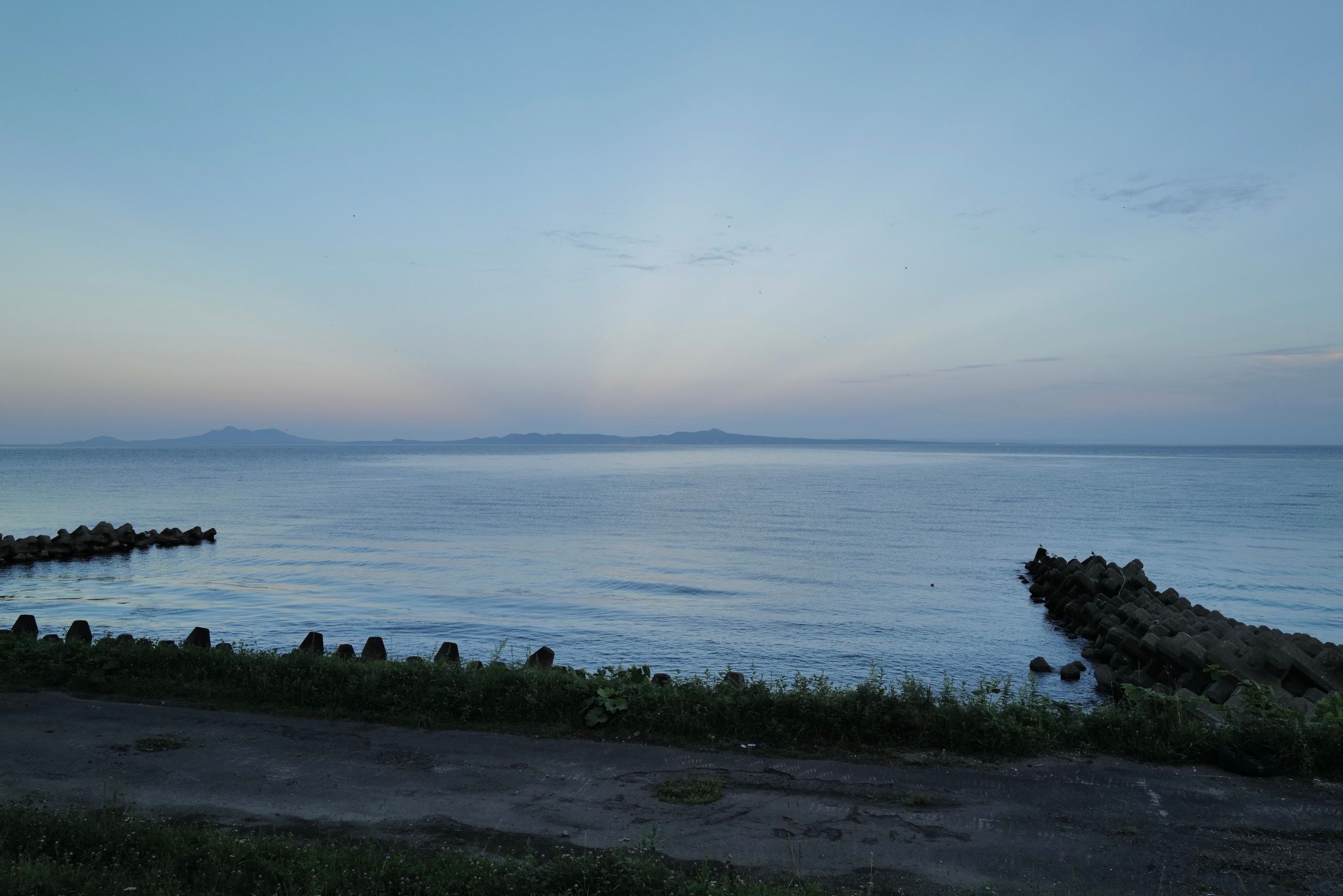
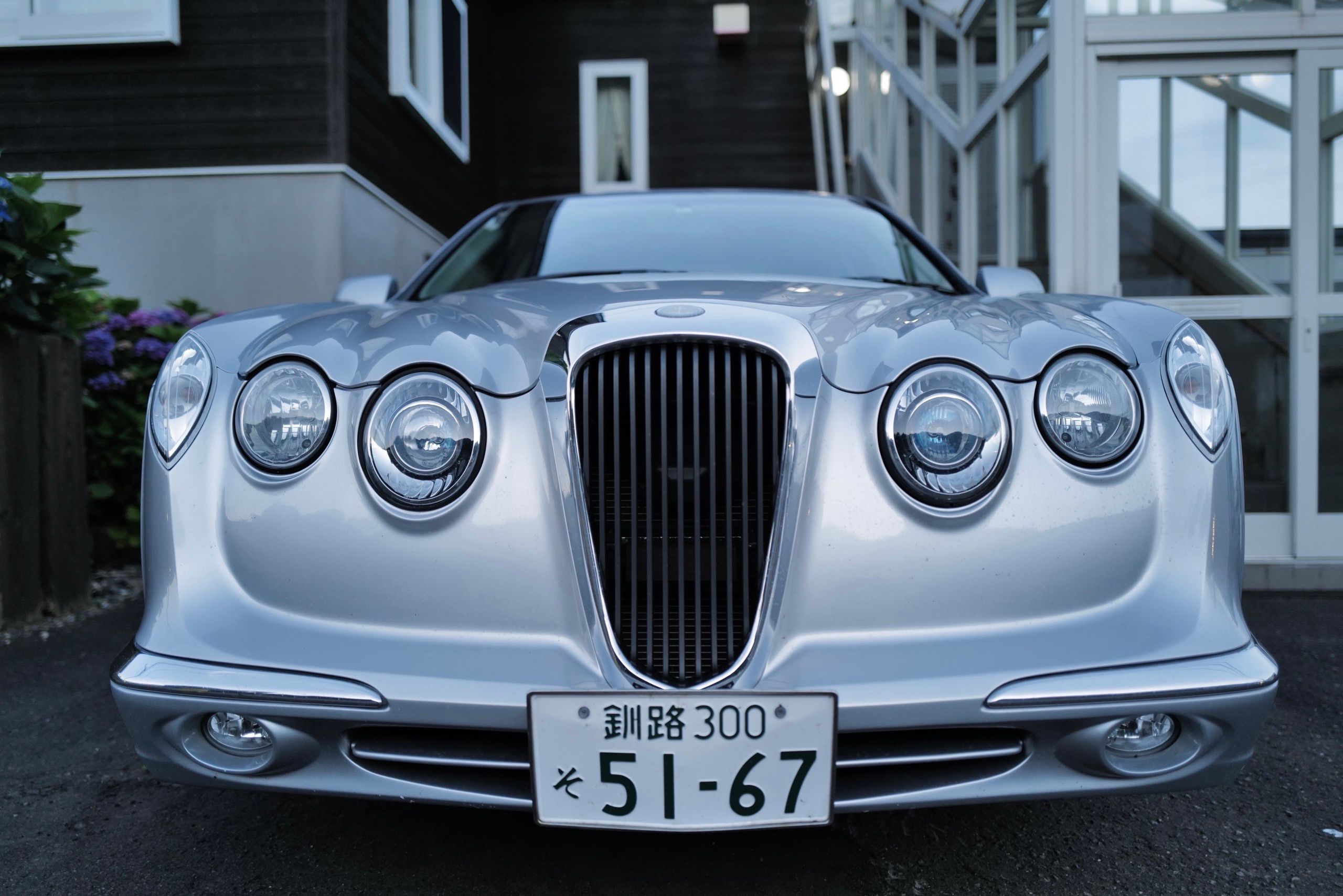
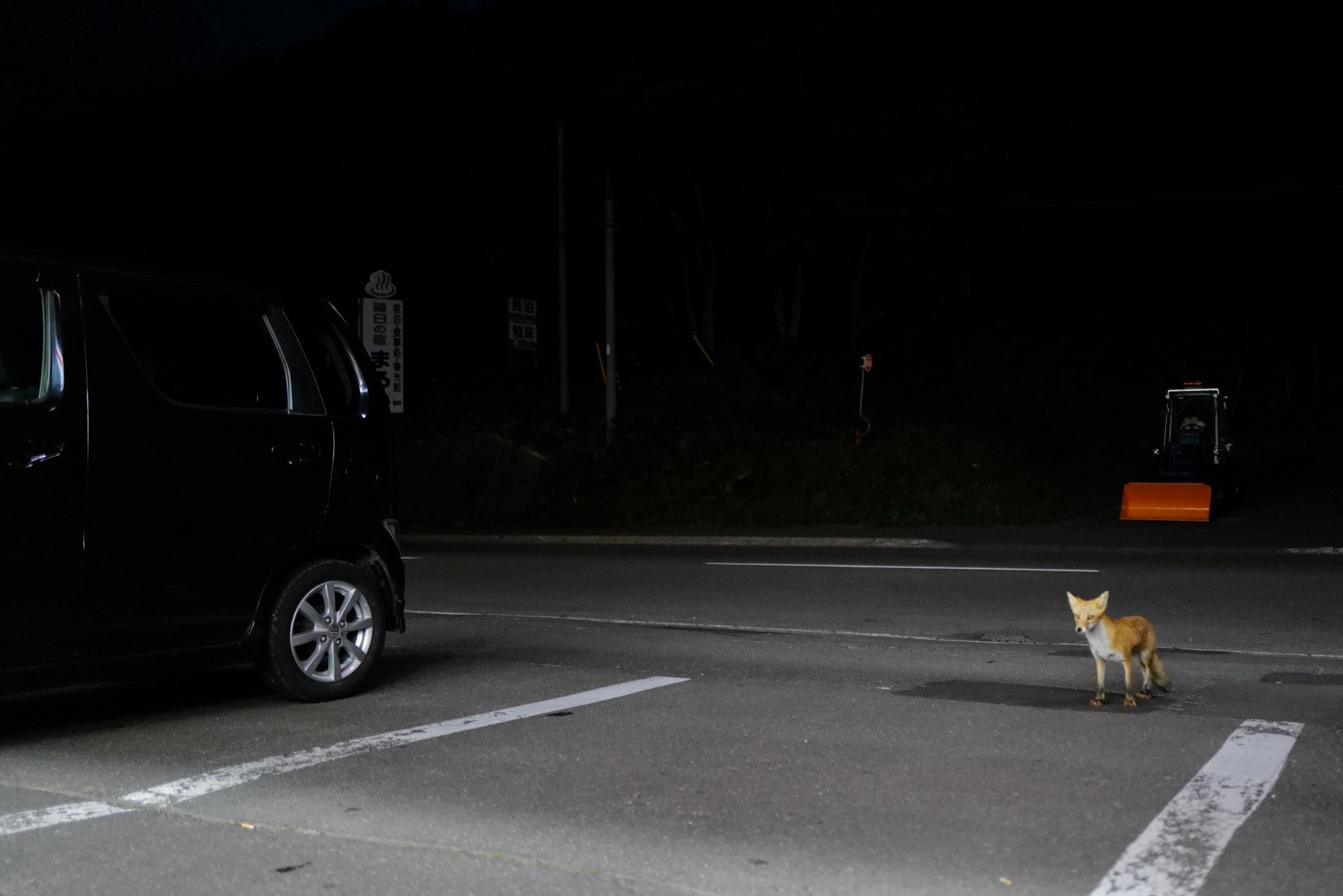
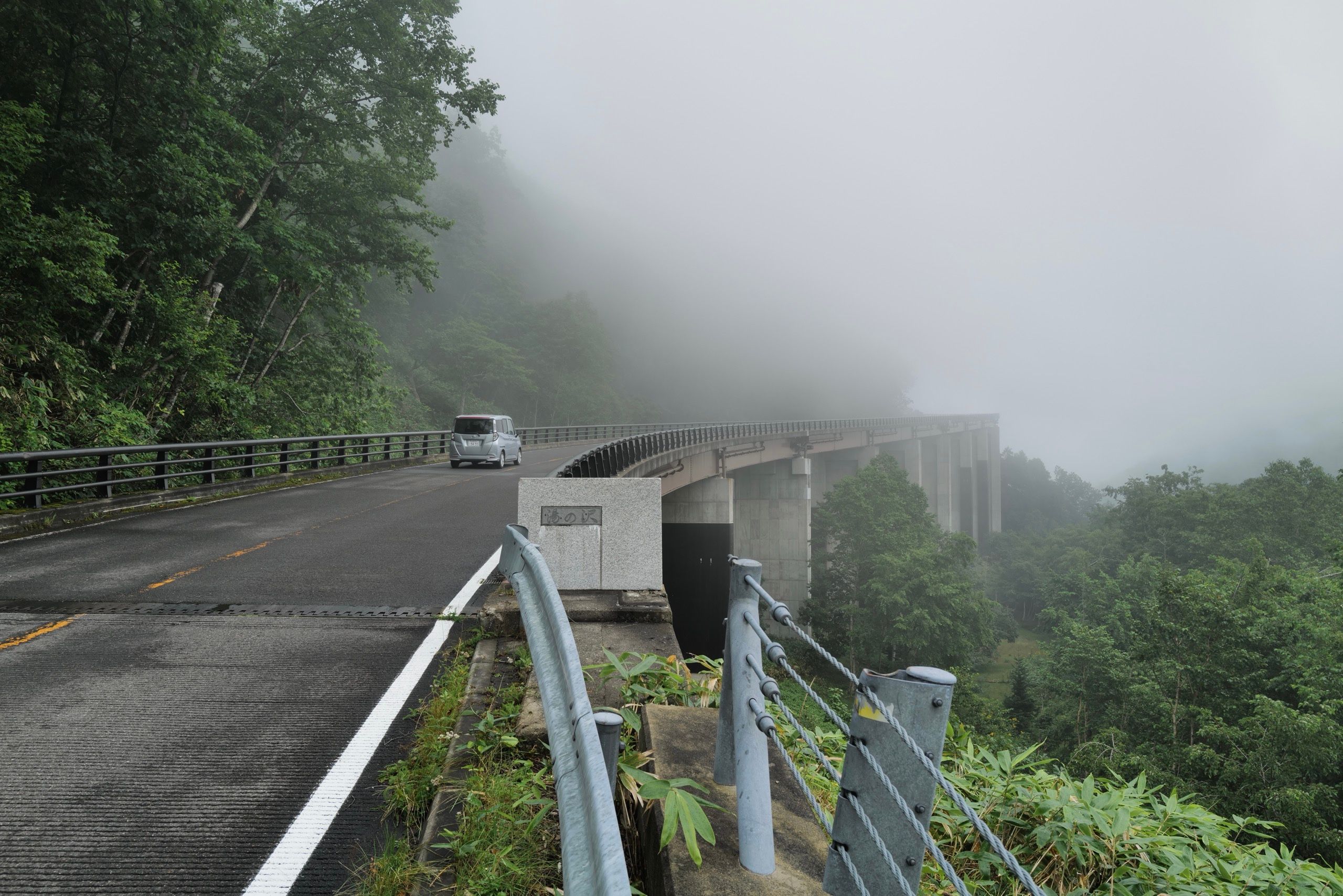
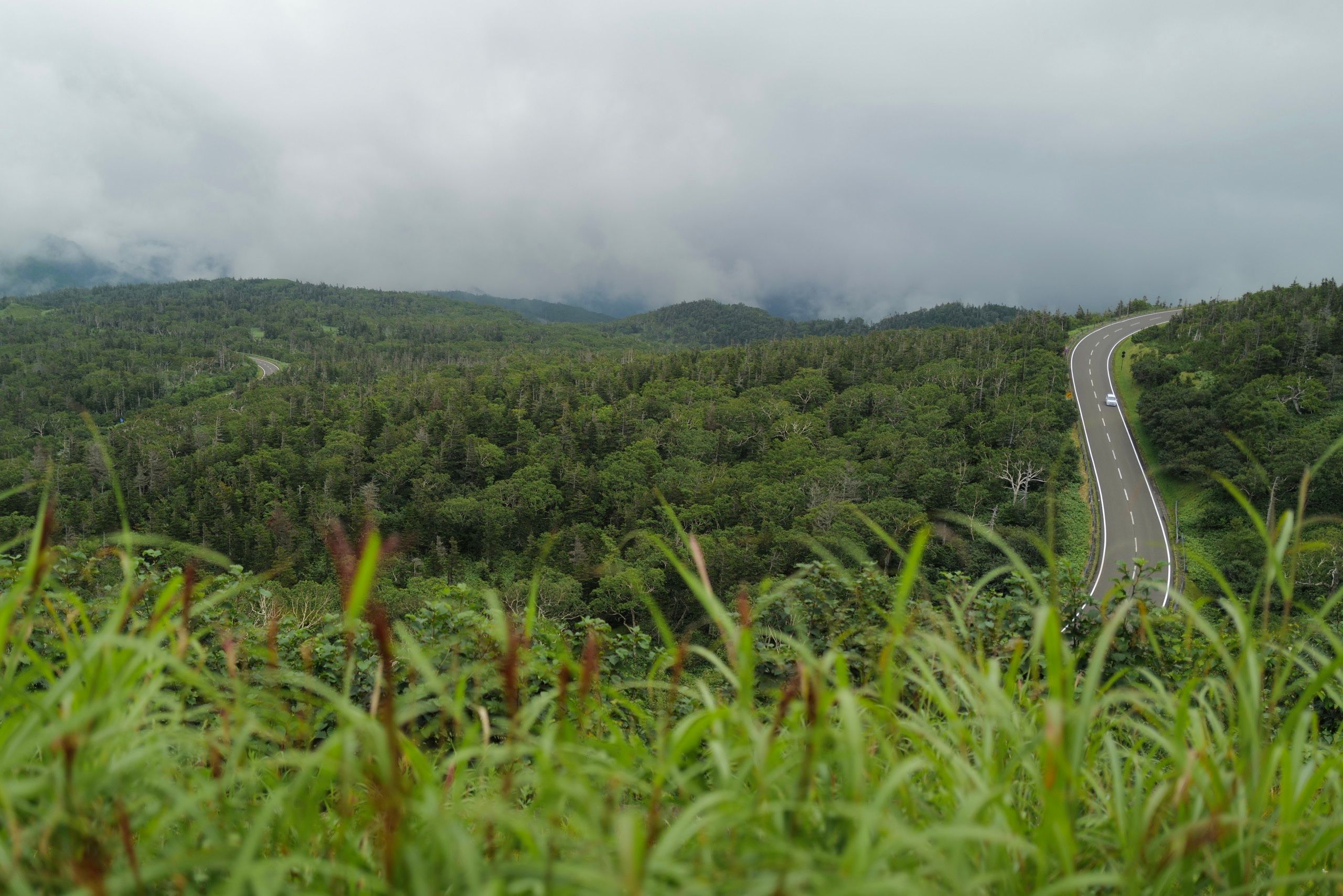
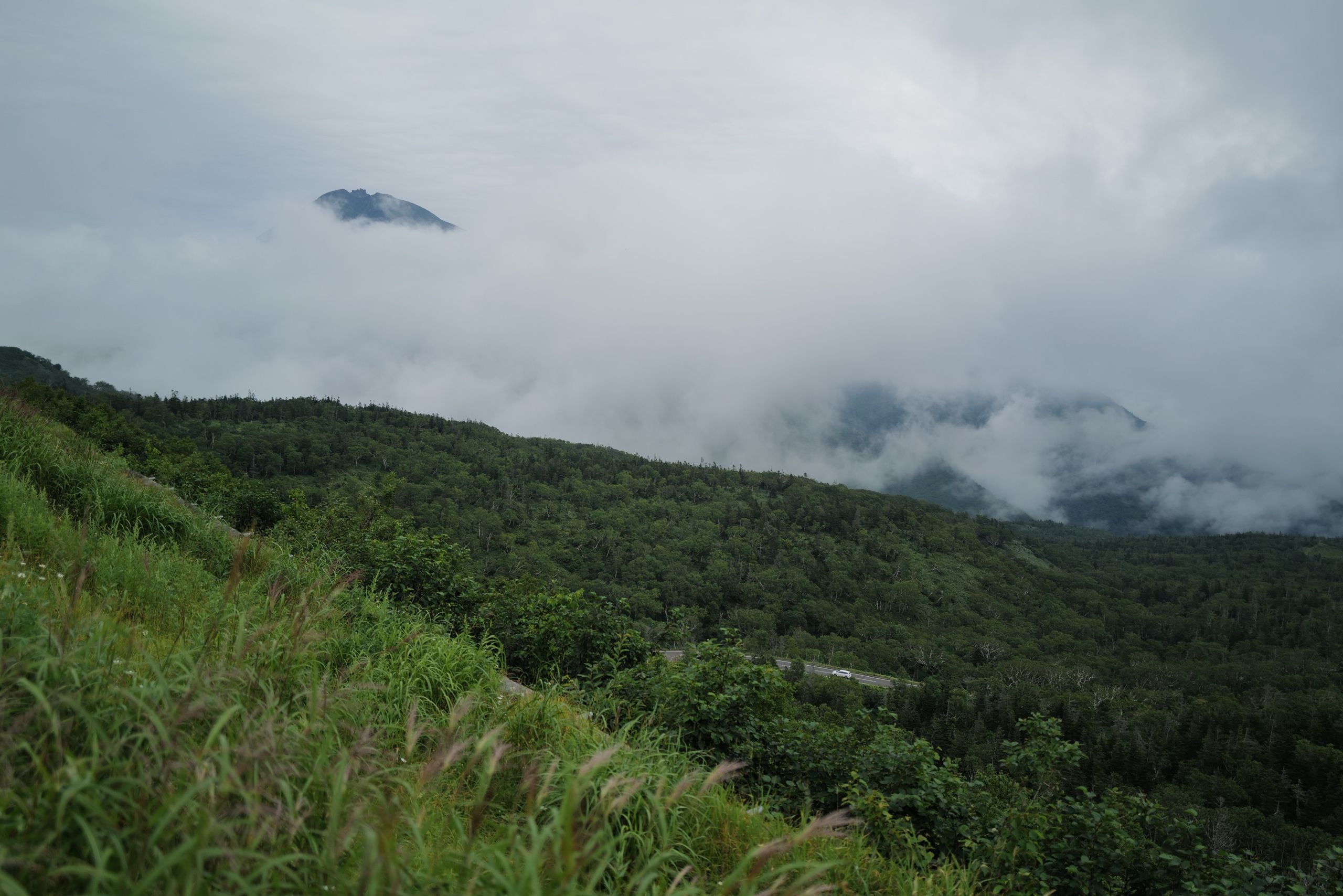
The hills rise on our left and the lowland rivers turn into clear mountain streams. We walk through villages and up the coast, to the sound of crickets over the waves, and watch Kunashir stretch out in the many-hued sunset, volcano after volcano, like the rest of the Kurils, all the way to Kamchatka. We stop for snacks at the first convenience store and a fox tiptoes across the parking lot, completely unafraid, either rabid or just well-fed by other customers. The weather is turning. Plans of climbing the highest peak on the Shiretoko Peninsula, Mount Rausu, are abandoned. We make camp in the parking lot of a sports complex, and when I lie down on my inflatable mattress I wonder what would happen if it would pop. A few seconds later it pops like a balloon, after some 200 nights on the road. I make another bed from my jumper and my jacket, then lie in the darkness and listen to the ghostly barking of foxes through the night.
We climb into the forest on the only road across Shiretoko. It’s cool but the air is dripping with humidity and soon we are soaked. The road climbs in switchbacks and across gorges, into a forest with endless shades of green and grey. Beards of lichen hang from the trees. We startle a snipe and it flies across the road directly in front of us, a bird with a 360-degree camera for eyes. We walk into the cloud and visibility drops to a few meters. A convoy of seven identical green tour buses climbs past us, and their passengers, schoolchildren on a trip, observe us from behind fogged-up windows. As we near the pass, the summit of Mount Rausu emerges from the cloud for brief seconds, a jagged volcanic dome floating in the sky, and we make coffee in the cold wind.
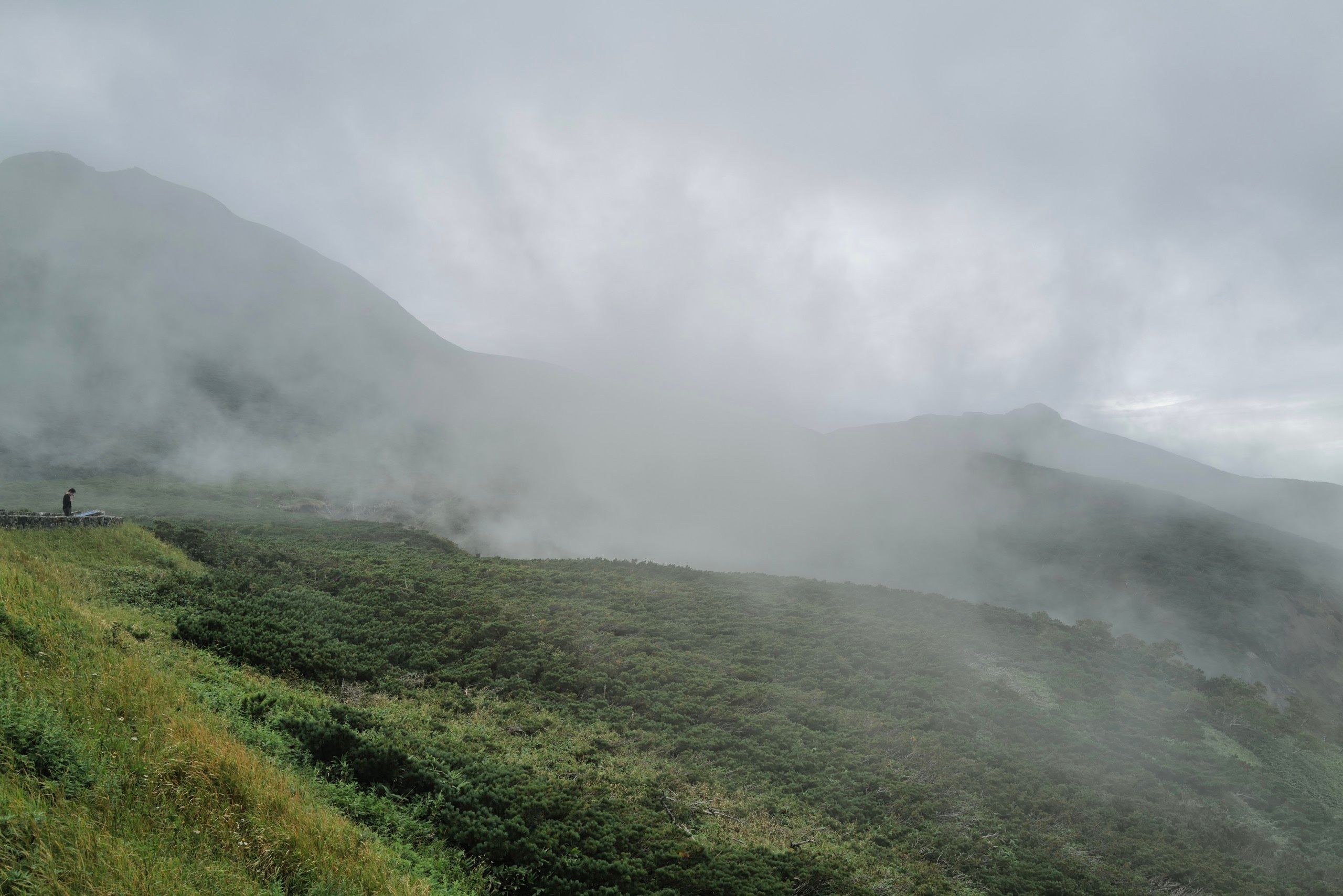
In the fishing port of Utoro, on the other side of the pass, is a place called Café Fox which serves as a karaoke bar, a pharmacy, a restaurant, and probably some other things, too. We step over puddles in the rain and walk inside. A young woman on her day off and a middle-aged man sit at the bar and we are instructed by the owner to squeeze our large foreign bodies between them, which we do. Beers are drafted and a gas-burner is procured so we can cook our dinner of shrimp and squid as we drink. The owner pours himself a large drink from an even larger clear plastic bottle and pops a song into the karaoke machine about his native Shiretoko, and he sings about walking in the forest, camping on the beach, and looking sadly across the sea at the Kurils.
We are asked where we are from and we launch into our routine of explaining that we are brothers from Hungary and one of us lives in the Netherlands and the other in Estonia. Everyone in Japan knows where the Netherlands are because of their history in south-western Japan but Hungary and Estonia are the stuff of Google Maps and some ooh’s and aah’s. The owner fiddles with the sound system and some moments later a random Hungarian hip-hop song comes on, and we smile, and I decide that randomness won’t do and ask for the controls.
The middle-aged man is gone by this point, off into the downpour in his pickup truck, and the woman and the owner nod along to the music. What is it about, they ask. Gabor and I consider this for a moment then tell them it’s a song about driving. This isn’t untrue, and it’s certainly a song for the road even if its title — A gyaloglás vége, which translates to “walking is over” — couldn’t be further from our truth, and, besides, how am I going to explain a song which, back in its day, conjured new slang out of thin air. Vesztegetnék, súlyadóznék, I think, and egyes Golf, kettes Golf, I also think, négyes Golf, but mostly I just giggle with Gabor and the woman and the owner, csak úgy szevasztok, tekergetem a rádiót, and we each drink our own drinks, tired and happy, and at some point I turn forty two, az életem igen-igen rövid, then we sleep, and walk on.
If you wish to see more — much more — of the Kuril Islands, check out Eugene Kaspersky’s blog, who has been visiting them for almost a decade.↩︎

